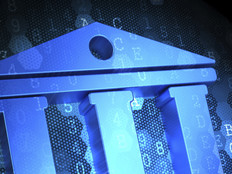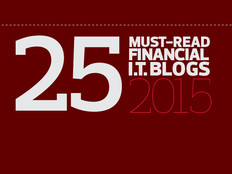How MasterCard Helps Small Businesses with Big Data
Despite how much has changed about running a business, one adage still rings true: Location is everything. Whether you’re the CEO of an expanding multinational or a pizza maker trying to open a second restaurant, the question of where to set up shop is not a simple one.
MasterCard, the $9.5 billion payments giant, claims to have the answer, and more. Sorting through an ocean of data generated by billions of transactions, the company’s MasterCard Advisors group helps businesses make data-driven decisions on everything from real estate moves to marketing campaigns.
To understand how MasterCard makes smart use of its massive data stores, BizTech spoke with Gary Kearns, group executive for information services at MasterCard Advisors. Kearns’ team relies on analytics generated by 43 billion transactions from more than 2 billion cardholders in 210 countries to forecast consumer behavior and help businesses understand their local markets and customers.
BIZTECH: Why is the use of data analytics valuable, even to a small business?
KEARNS: Increasingly, with each decision that someone is trying to make, there is an ideal recipe to inform that decision, and that recipe involves some combination of data and analytics.
If you are trying to determine where to find new customers, there is a recipe for how to do that, and it might involve some transaction insights. It might involve some demographic data. It might involve some search or sentiment data, or other data sources.
We are trying to stay on top of what the recipe is to answer those key questions. As we work with small businesses, we help them answer their big questions, drawing from the right data for the situation. For instance, we help them look at sentiment data or social data and the correlation between that social data and their performance. So if you are being “liked” more, or if there is more buzz about your store or your location, how does that equate to activity? There you combine different data types and then use analytics to determine how to get more customers in the door.
Moving forward, there is going to be a lot more data of varying types. Look at the Internet of Things — where all of a sudden my refrigerator and watch are contributing data on top of all the other data that I generate each day. Now, the refrigerator is telling me that I am getting one beer and asking if I want to automatically order more. And so, as we think about that explosion of data, it’s going to take even more for people to demystify it and make sense of it. What’s the data and analytics recipe, and what does a business do to not get overwhelmed by all this noise?
BIZTECH: How does MasterCard Advisors work with the SMB community?
KEARNS: This has been an area of substantial focus for us, and we have come out with new products focused on small and medium-sized businesses. One is called Local Market Intelligence. What it does — whether for a restaurant, dry cleaner, salon or other retailer — is to provide them with a lot of information about their performance, relative to the competition.
With a lot of these smaller merchants, they don’t really know whether their customers are first-time or repeat customers. They are not capturing transaction data. If you are the owner of a restaurant, you may recognize that Gary is coming in for dinner again, but you don’t capture that data in a way that you can work with.
What we can do with our data, down to this location level, is provide very rich insights into average ticket size compared with their competitors, the frequency of their customers, and a variety of things around their performance — around their customer loyalty and around how they can acquire new customers. We take this Big Data, and we transform that into the insights that can help.
BIZTECH: What advice can you give businesses just starting out with data analytics?
KEARNS: Everything starts with privacy. As we look at any data, whether we have it today or we are interested in using new sources to enrich what we have, we are driven by our privacy-by-design principles. Data privacy is important for any business, as it reflects fundamentally on your brand, but it also is critical in terms of interacting with customers. Before anybody does anything, you really need to have a privacy framework that enables you to safeguard data. Additionally, the key thing is knowing the questions that you should be asking.
Some of it can be very basic: How do I acquire my customers? How do I get more out of my existing customers? Where do I expand if I am doing great in this location? How do I decide where I expand?
Finally, I’d suggest you look at these questions and find a partner. It could be us, or it could be others who have experience in that. You don’t want to spend years and a whole bunch of money on something unguided.
There are tools that offer relevant information to answer those questions. Looking at some of the small businesses we work with — it could be a hair salon, just understanding what the competitive environment is like, and wondering, do we expand to the north, south, east or west? There are also things they can do from an operational point of view, if they have the right information. If it’s a restaurant, it could be menu changes, for instance.
Having access to that data will help them link their actions to measurable results. You don’t need a Hadoop cluster and all kinds of fancy stuff to do that.
BIZTECH: How can businesses use data analytics to build relationships?
KEARNS: Understanding your customer is so powerful. One of the things we do here in the United States is create segments of people based on purchasing behavior. So let’s say there are pet lovers or there are international travelers or there are fine diners — this is all aggregated information based on how people spend. People fall in certain categories.
If I am the business, I want to have some kind of segmentation for my customers, whether these are people who eat here more than once a month or people who don’t eat here — or it could be people who like certain events, or whatever. The more I can understand my customers, the better.
Then you can build a relationship with customers based on these insights. As you look at relationships, it’s all about understanding as much as you can about your customer segments and using that information in a privacy-by-design way, as I mentioned earlier. There are a lot of rich insights that can be provided to a business about their customers and where they come from — about their anonymous competitive set.
One of the big “aha” moments that some of our customers get is when we show them their top five ZIP codes — the ZIP codes where most of their customers come from. For example, if I’m a restaurateur and I look at the top five ZIP codes for my competitive set, it’s possible that three of those ZIP codes aren’t even in the top five or top 10 for my restaurant. So I might want to look deeper at these three ZIP codes, because consumers from there are eating at my competition, but not at my place. Again, it’s about understanding your customers, understanding who isn’t doing business with you, and being able to then build relationships and foster them.









